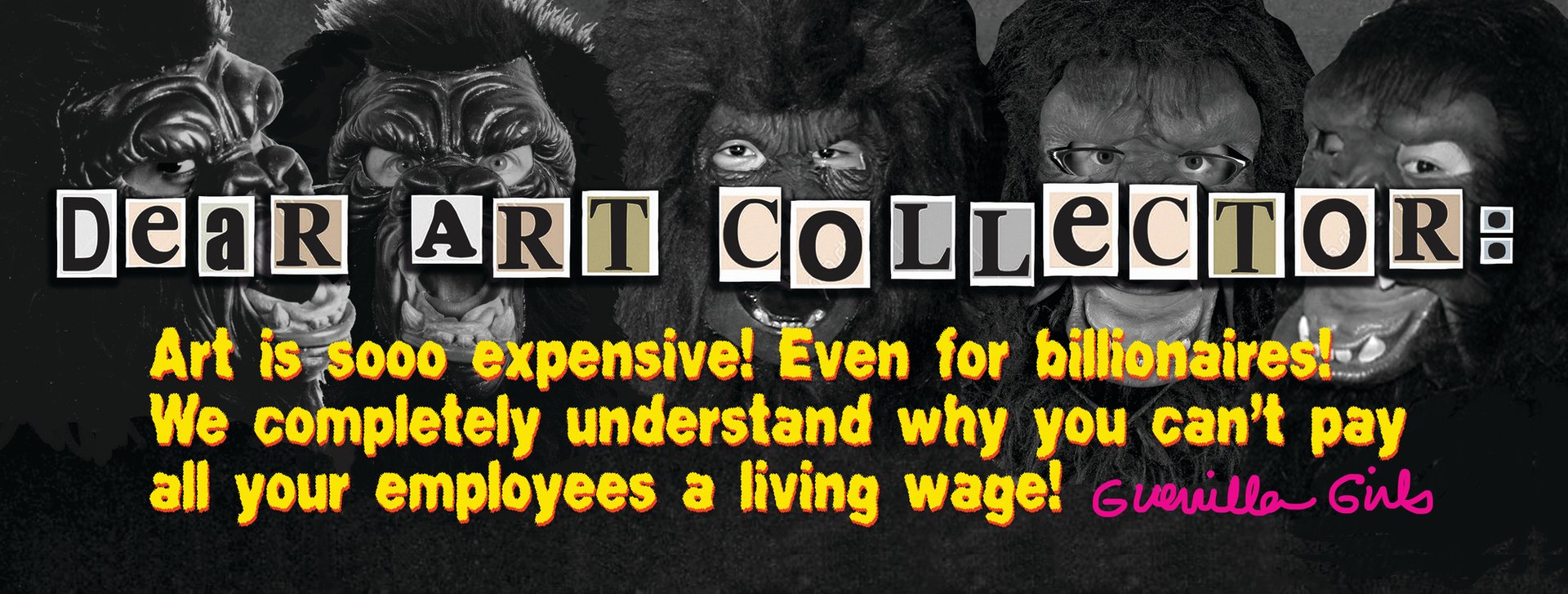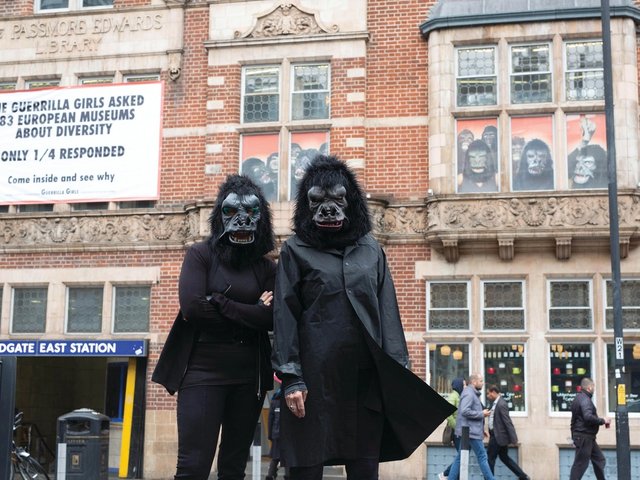The Guerrilla Girls have spent more than 30 years holding the art world to account. Armed with humour, statistics and gorilla masks, the anonymous US-based collective has produced a steady stream of posters, hoardings and actions denouncing white, male privilege. During Frieze week, the self-styled “feminist masked avengers” are turning their attention to Europe. Their first UK exhibition, Is It Still Even Worse in Europe?, surveys more than 400 European museums on the efforts they have made towards diversity. The mixed results are on show at London’s Whitechapel Gallery until 5 March 2017. Meanwhile, the Guerrilla Girls’ Complaints Department will be in residence at Tate Modern’s new Exchange space until Sunday 9 October. And despite their aversion to art fairs, they may even be coming to Frieze, says Frida Kahlo, one of the group’s founders (members generally go by the name of dead female artists). Ahead of their London debut, she tells The Art Newspaper about the dangers of tokenism and private museums—and why a Guerrilla Girl’s work is never done.
The Art Newspaper: The Whitechapel Gallery exhibition revisits your 1986 poster “It’s even worse in Europe”. Why was it time to look at Europe?
Frida Kahlo: We’ve had a number of invitations to do gigs and exhibitions in European institutions in recent years, so we wondered if things were better here. When the Whitechapel asked us to do an exhibition in their archive, we wanted to do something about the future but connected to the past. We sent 400 questionnaires to museums all over Europe and asked them very pointed questions about diversity, spending, funding, all kinds of issues. We did something similar back in the 90s with US museums, but we pretended to be a graduate student writing a doctoral thesis.
What kind of responses to the survey did you receive? How are you presenting them in the gallery?
We received 100 responses—about a quarter [of the number we sent out]. We had hoped for more. All of the responding institutions will be on a list on the wall. And all of the non-responding institutions will be on a huge carpet on the floor. All of the questionnaires will be available, but we have pulled out some of the ones that we think are the most interesting. We’re letting the institutions that didn’t agree with the questionnaire vent their opinions of it as well.

According to the results, where in Europe is better—and where is worse?
Spain is very interested in the idea of feminism. They want to do better, but I can’t say that their institutions do do better. Poland is very responsive. We realised that eastern European museums feel that eastern European artists are marginalised. UK institutions try hard. I haven’t seen the new Tate Modern rehang but statistically it sounds great. We never heard from the Centre Pompidou in Paris. They did a blockbuster show a couple of years ago called Elles, which retold the history of Modernism through the works of women in their collection. But they haven’t done anything since, so it’s a perfect example of tokenism. We think tokenism is more a part of the problem than the solution. A lot of institutions think they’re doing better than they really are: they wrote very affirming answers about how involved they are in the work of women artists, and then you look at their collection and they’re at, like, 12%.
You are also in residency at Tate Modern during Frieze week.
We decided to set up a parody of the complaints departments that used to be in US department stores. We will be there to talk to anyone about any complaints they have, and help them figure out what to do. We’re going to put up boards where visitors can state their complaint, which we will hopefully archive at the end. We wanted to take the idea of a museum as a place where you go in awe and appreciation and turn it into a critical space.
What do you think have been the major changes—for better or worse—in the art world during your 31 years of activism?
When we first started, it was not unusual to hear a critic or a curator or an art dealer say that women and artists of colour weren’t shown or collected because their work didn’t rise to a certain standard. I don’t think anyone would say that any more. But there’s a lot of coded discrimination now and a lot of that is about money. There’s income inequality, there’s a glass ceiling, and as art becomes more of an instrument of capitalist investment, these marginalised groups become less important. The proliferation of private museums is a little creepy. We just finished a project at the Museum Ludwig in Cologne about that. What kind of a story can be told by art that costs the most and art that’s chosen by a handful of very homogeneous people? The history of art and the record of our culture should be much richer than that. We can’t let those people tell us who we are.
Your books now appear on the curricula of art history courses, and museums buy and display your posters. Do you worry that you’ve become part of the establishment you critique?
We’re anonymous, we sell books and T-shirts and posters for $20 apiece, we don’t have a cadre of collectors behind us—I think that tells you we’re not part of that art establishment. We’re glad that our portfolios—complete collections of our posters—are now in more than 50 museums across the world. They can be infinitely reproduced, so can’t be controlled in the way a lot of art pieces, paintings or sculptures can be owned. It’s really hard to say no to a museum audience because it’s so large. There are people in institutions who are trying to turn the big ship around. We wouldn’t mind being part of that effort.

What do you think of recent efforts by museums and philanthropists to support female artists, such as the Tate Modern’s new acquisitions and collection displays?
Let’s hope [they don’t] go the way of Elles at Centre Pompidou. A few years from now, we can look back and say whether it was sincere and serious or whether it was a fad. The art world is great at falling in love with things and then throwing them away.
Your posters and actions have targeted artists, dealers, museums, critics and collectors. What about art fairs?
We just might be doing something at Frieze this year. [Art fairs] make me ill. They are the epitome of late capitalist fascination with manufactured value. I don’t know any artists who like art fairs.
You’ve also campaigned on issues beyond the art world, such as discrimination in Hollywood. Are you targeting any new areas?
We’re kind of hormonal. When things piss us off, we do something about it. Right now [it’s] the idea of private art museums and how all the things that are wrong with the global economy are super-wrong with the art economy.
Is a Guerrilla Girl’s work ever done?
A hundred and fifty years of feminist activism is not going to reverse millennia of patriarchy. It would be great to see that in my lifetime, but I don’t expect it. Unless we had an art world revolution, I don’t know.
• The Guerrilla Girls: Is It Still Even Worse in Europe? Whitechapel Gallery, until 5 March 2017
• Complaints Department Operated by the Guerrilla Girls, Tate Modern, until 9 October



